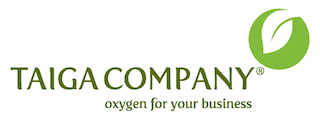How To Make Your IT Systems More Environmentally Friendly

As part of being a responsible business owner, you are probably already looking at ways to reduce your company’s impact on the environment. After all, it’s an issue that affects everyone in one way or another. We have to make an effort both in our personal and professional lives to make a difference.
By assessing different areas of your business, you can find ways to improve your processes and reduce the energy consumption and carbon footprint of your company. This can come from reducing waste and introducing an environmentally friendly supply chain policy.
One of the areas of your business to look at is your IT usage. Here are some ways in which you can make simple changes to your IT systems.
Don’t Print Unnecessarily
Gone are the days when you needed to print and file every document you were sent. Most documents don’t need to be printed at all. Make it policy in your organization to not print unless necessary. Not only will you save paper, but you’ll also save on printer consumables and energy too. You can get advice on leasing printers from your IT support company . They can also help you to set up your systems in the most efficient way possible.
Switch To Cloud Computing
Servers require a lot of power and cooling to keep them running efficiently. Rather than house your servers, move your computing to the cloud. By doing this you’ll drastically reduce your energy consumption, as well as avoid the need for buying and eventually disposing of server equipment .
Set Your Systems To Turn Off
Many employees get into the habit of just leaving their screens on, or pcs in standby mode when they leave the office for the night. Multiply this by a large number of PCs, 5 days per week and you’re looking at a hefty energy bill across the year. You can set your IT network to power down PCs after a certain time in the evening when you know people won’t be in the office.
Buy Energy Efficient Equipment
Modern IT equipment is far more energy-efficient than some of the older tech. If you’re running multiple pcs, printers, and monitors across the business, this can add up in terms of energy costs.
Replace your old, electricity-guzzling tech with a newer model.
Buy Refurbished Equipment
Keep equipment out of landfill by buying refurbished where possible. Buying second-hand equipment can save you money too.
The same goes for when you’re getting rid of equipment. If it’s in good working order and you’re just upgrading, then sell or gift your existing equipment so that it can continue to be useful.
Use Renewable Energy
Businesses have a choice about who they use as their energy provider. There are now energy companies that use entirely renewable energy sources, meaning that you can power your business with less impact on the environment.
Final Thoughts
There are many advantages to reducing your carbon footprint. Not only will you be helping the planet, but you’ll also be going a long way towards reducing your business costs. Using less energy leads to cheaper utility bills and equipment costs.


